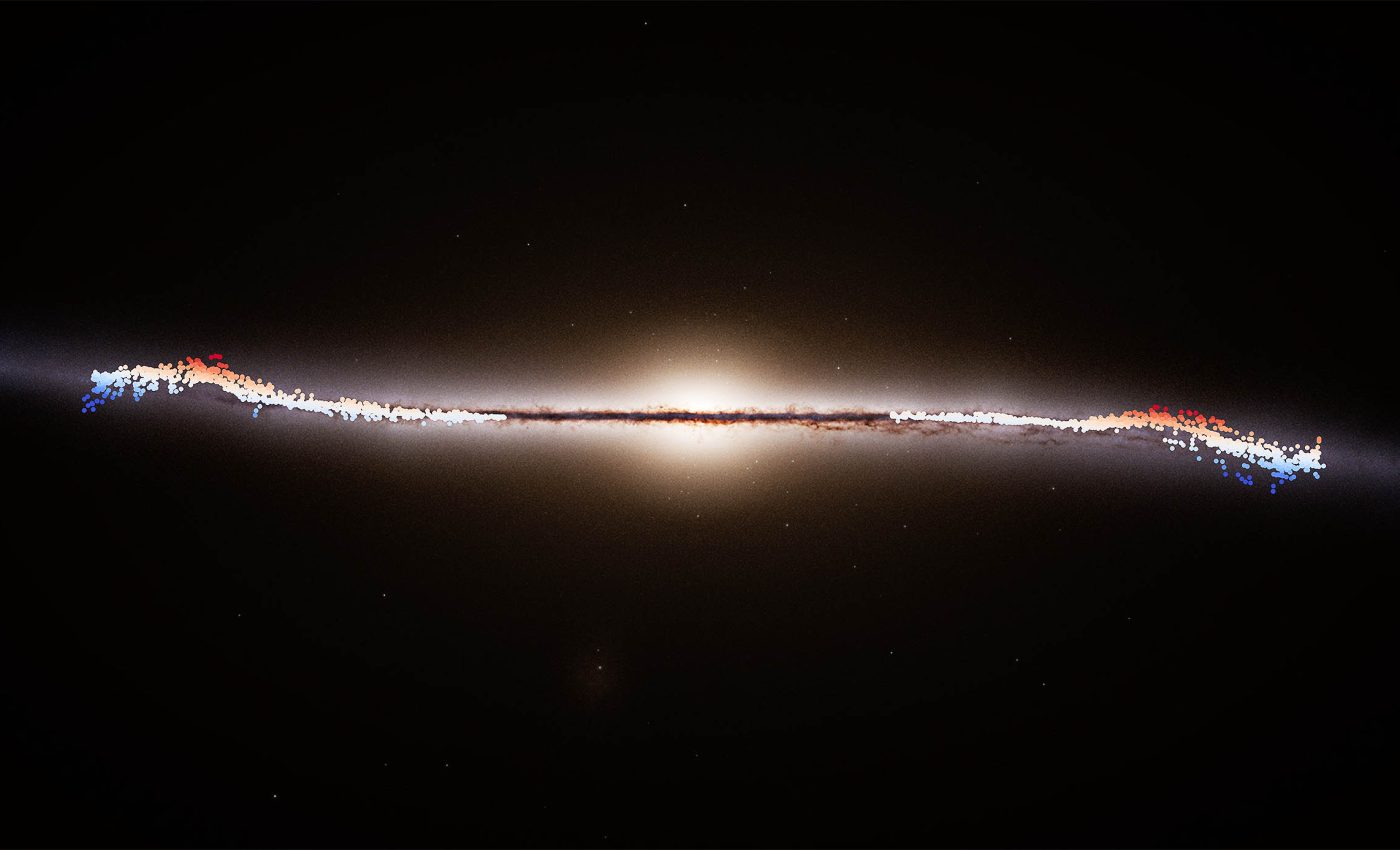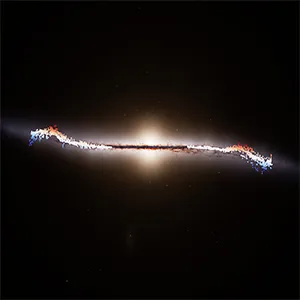
Astronomers capture a massive wave rippling across our Milky Way galaxy
Astronomers have spotted a vast wave rolling through the outer disk of our galaxy. It stretches over tens of thousands of light-years and appears to ripple away from the center, like circles spreading from a stone tossed into a pond.
The discovery comes from fresh analyses of data gathered by the European Space Agency’s Gaia space telescope, led by a team including Eloisa Poggio at Italy’s Istituto Nazionale di Astrofisica.
The research adds a new layer to the Milky Way’s already complex dance of rotation, warp, and wobble.
Gaia’s precision – three spatial dimensions plus three components of stellar motion – allows scientists to build top-down and edge-on maps of the galaxy in unprecedented detail.
From warp and wobble to a wave
For a century, we’ve known that stars orbit the Milky Way’s center. Since the 1950s we’ve known the thin disc is warped. In 2020, Gaia showed that the disc also wobbles over time, much like a spinning top.
Now there’s another twist. A coherent wave pattern in the vertical positions and motions of stars sweeps across a huge swath of the outer disc, at radii of roughly 30,000 to 65,000 light-years from the galactic center. That’s a sizable chunk of a system about 100,000 light-years wide.
“What makes this even more compelling is our ability, thanks to Gaia, to also measure the motions of stars within the galactic disk,” said Poggio.
“The intriguing part is not only the visual appearance of the wave structure in 3D space, but also its wave-like behavior when we analyze the motions of the stars within it.”
Mapping the ripple in space
Gaia tracks each star’s position and its motion toward or away from us, as well as across the sky. Combine billions of those measurements, and patterns emerge.
In edge-on maps, the team color-coded stars by how high or low they sit above the midplane and added arrows to show their vertical motions.
The crest and trough of the positional wave (shown in red and blue) don’t align exactly with the peaks in motion (the longest upward arrows). Instead, the two are shifted. That phase offset is exactly what you’d expect for a traveling wave.
“This observed behavior is consistent with what we would expect from a wave,” Poggio explained.
A helpful way to picture it is the “stadium wave.” Freeze that crowd motion at an instant in time. Some people are upright (the red regions).
Others have just sat down after the crest passed. And some, just ahead of the crest, are starting to stand – the ones with the biggest upward motion arrows.
Young stars ride the wave
To trace the pattern far from the Sun, the team relied on two kinds of bright beacons: young giant stars and Cepheid variables.
These stars are luminous, numerous, and, in the case of Cepheids, act as distance markers because their brightness varies in a regular way.
Because both groups seem to move with the wave, the scientists suspect the galaxy’s gas disk may be undulating too.
If so, newly formed stars could preserve the “memory” of the gas wave they were born in, carrying the signal forward as they age.
Where did this great wave come from?
No one knows yet. A collision or close pass with a dwarf galaxy could have sent a disturbance through the disc long ago, and that wave is still ringing around the rim. The Milky Way has a history of such encounters.
The great ripple might also connect, in some way, to a smaller, nearby filament of gas and young stars. This structure is known as the Radcliffe Wave, which snakes through the solar neighborhood.
“However, the Radcliffe Wave is a much smaller filament, and located in a different portion of the galaxy’s disk compared to the wave studied in our work (much closer to the Sun than the great wave). The two waves may or may not be related. That’s why we would like to do more research,” Poggio said.

Waves as galactic fossils
Gaia is far from done. Its next big data release will sharpen the positions and motions of millions more stars, including variable stars like Cepheids.
Finer measurements mean cleaner wave maps and tighter constraints on when and how the ripple began.
“The upcoming fourth data release from Gaia will include even better positions and motions for Milky Way stars, including variable stars like Cepheids,” said Johannes Sahlmann, ESA’s Gaia project scientist.
“This will help scientists to make even better maps, and thereby advance our understanding of these characteristic features in our home galaxy.”
Waves like this are fossils of past events. Pinning down their shape and speed can tell us when the disk was disturbed, how stiff it is, and how matter – both visible and dark – pulls on the outer galaxy.
The Milky Way may never sit still, but with Gaia’s panoramic, precise vision, we can finally watch the choreography play out and start asking who rang the bell that set the galaxy rippling.
Image credit: ESA/Gaia/DPAC, S. Payne-Wardenaar, E. Poggio et al (2025)
The study is published in Astronomy & Astrophysics.
—–
Like what you read? Subscribe to our newsletter for engaging articles, exclusive content, and the latest updates.
Check us out on EarthSnap, a free app brought to you by Eric Ralls and Earth.com.
—–













